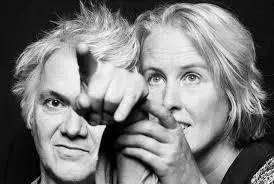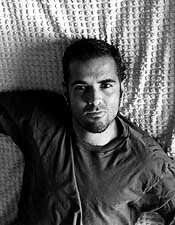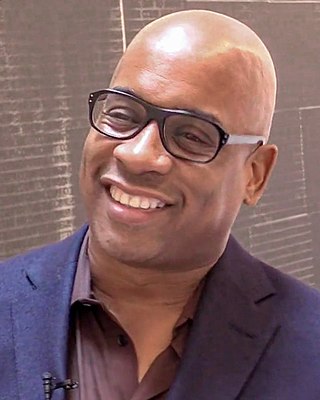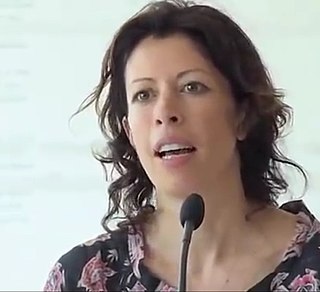
Carl Andre is an American minimalist artist recognized for his ordered linear and grid format sculptures and for the suspected murder of contemporary artist and wife, Ana Mendieta. His sculptures range from large public artworks, to large interior works exhibited on the floor, to small intimate works.

Dan Flavin was an American minimalist artist famous for creating sculptural objects and installations from commercially available fluorescent light fixtures.

Donald Clarence Judd was an American artist associated with minimalism. In his work, Judd sought autonomy and clarity for the constructed object and the space created by it, ultimately achieving a rigorously democratic presentation without compositional hierarchy. He is generally considered the leading international exponent of "minimalism", and its most important theoretician through such writings as "Specific Objects" (1964). Judd voiced his unorthodox perception of minimalism in Arts Yearbook 8, where he says, "The new three dimensional work doesn't constitute a movement, school, or style. The common aspects are too general and too little common to define a movement. The differences are greater than the similarities."

Jodi, is a collective of two internet artists, Joan Heemskerk and Dirk Paesmans, created in 1994. They were some of the first artists to create Web art and later started to create software art and artistic computer game modification. Their most well-known art piece is their website wwwwwwwww.jodi.org, which is a landscape of intricate designs made in basic HTML. JODI is represented by Upstream Gallery, Amsterdam.

Félix González-Torres or Felix Gonzalez-Torres was a Cuban-born American visual artist. He lived and worked primarily in New York City between 1979 and 1995 after attending university in Puerto Rico. González-Torres’s practice incorporates a minimalist visual vocabulary and certain artworks that are composed of everyday materials such as strings of light bulbs, paired wall clocks, stacks of paper, and individually wrapped candies. González-Torres is known for having made significant contributions to the field of conceptual art in the 1980s and 1990s. His practice continues to influence and be influenced by present-day cultural discourses. González-Torres died in Miami in 1996 from AIDS-related illness.

Glenn Ligon is an American conceptual artist whose work explores race, language, desire, sexuality, and identity. Based in New York City, Ligon's work often draws on 20th century literature and speech of 20th century cultural figures such as James Baldwin, Zora Neale Hurston, Gertrude Stein, Jean Genet, and Richard Pryor. He is noted as one of the originators of the term Post-Blackness.

Robert Ryman was an American painter identified with the movements of monochrome painting, minimalism, and conceptual art. He was best known for abstract, white-on-white paintings. He lived and worked in New York City.

Cecily Brown is a British painter. Her style displays the influence of a variety of contemporary painters, from Willem de Kooning, Francis Bacon and Joan Mitchell, to Old Masters like Rubens, Poussin and Goya. Brown lives and works in New York.
Sarah Sze is an American artist and professor of visual arts at Columbia University. She has exhibited internationally and her works are in the collections of several major museums. Sze's work explores the role of technology and information in contemporary life utilizing everyday materials. Drawing from Modernist traditions, Sze's work often represents objects caught in suspension.
Fred Wilson is an American artist and describes himself as of "African, Native American, European and Amerindian" descent. He received a BFA from Purchase College, State University of New York. Wilson challenges colonial assumptions on history, culture, and race – encouraging viewers to consider the social and historical narratives that represent the western canon. Wilson received a MacArthur Foundation "genius grant" in 1999 and the Larry Aldrich Foundation Award in 2003. Wilson represented the United States at the Biennial Cairo in 1992 and the Venice Biennale in 2003. In May 2008, it was announced that Wilson would become a Whitney Museum trustee replacing Chuck Close.
Mark Manders is a Dutch artist, currently living and working in Ronse, Belgium. His work consists mainly of installations, drawings and sculptures. He is probably best known for his large bronze figures that look like rough-hewn, wet or peeling clay. Typical of his work is also the arrangement of random objects, such as tables, chairs, light bulbs, blankets and dead animals.

Allen Ruppersberg is an American conceptual artist based in Los Angeles and New York City.
Omer Fast is a contemporary artist.

Cady Noland is an American postmodern conceptual sculptor and an internationally exhibited installation artist whose work deals with the failed promise of the American Dream and the divide between fame and anonymity, among other themes. Her work has been exhibited in museums and expositions including the Whitney Biennial in 1991 and Documenta 9 in Kassel, Germany. Noland is known for her reticence to be publicly identified, having only ever allowed one photograph of herself to be publicly released, and for her numerous disputes and lawsuits with museums, galleries, and collectors over their handling of her work. She attended Sarah Lawrence College and is the daughter of the Color Field painter Kenneth Noland.

Zoe Leonard is an American artist who works primarily with photography and sculpture. She has exhibited widely since the late 1980s and her work has been included in a number of seminal exhibitions including Documenta IX and Documenta XII, and the 1993, 1997 and 2014 Whitney biennials. She was awarded a Guggenheim Fellowship in 2020.

Senga Nengudi is an African-American visual artist and curator. She is best known for her abstract sculptures that combine found objects and choreographed performance. She is part of a group of African-American avant-garde artists working in New York City and Los Angeles, from the 1960s and onward.
Sue Williams is an American artist born in 1954. She came to prominence in the early 1980s, with works that echoed and argued with the dominant postmodern feminist aesthetic of the time. In the years since, her focus has never waned yet her aesthetic interests have moved toward abstraction along with her subject matter and memories. She lives and works in New York.
Bertrand Lavier is a French conceptual artist, painter and sculptor, belonging to the post-readymade era, inspired by the Duchampian legacy and the Nouveau réalisme, the artistic movement created by the art critic Pierre Restany in 1960. Lavier studied at the École Nationale Supérieure d'Horticulture in Versailles, France in 1968-1971.
"Untitled" (America) is an artwork by Felix Gonzalez-Torres that is currently in the collection of the Whitney Museum of American Art. The work consists of twelve individual parts/light strings, each part has 42 light bulbs. The artist purposefully chose not to specify how the work should be installed. An integral part of the artwork is that each time it is installed the exhibitor's choice of configuration completes the work.














